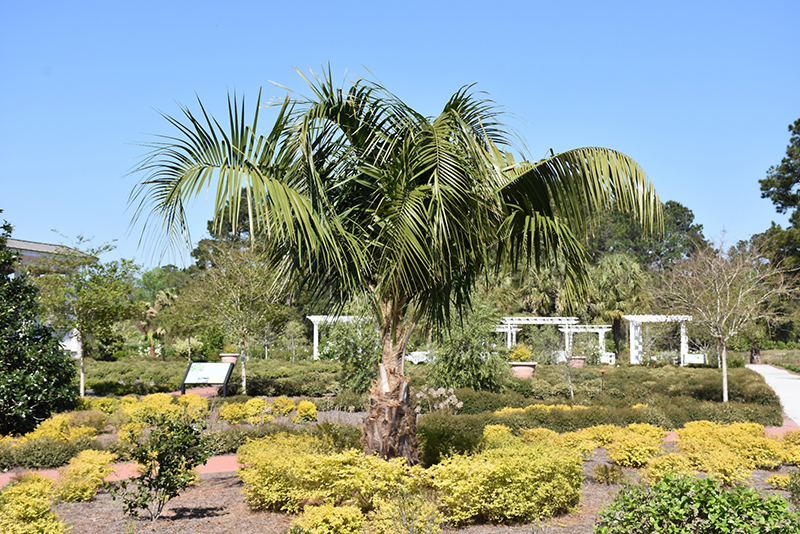Mule Palm
Description
This variety is an inter-generic hybrid with gracefully arching feather type leaves; remarkably cold hardy; rarely produces seed and is nearly always sterile; needs full sun; an excellent accent tree for a tropical look in a cooler climate area
Landscape Attributes
Mule Palm is an evergreen tree with a strong central leader and a towering form, with a high canopy of foliage concentrated at the top of the plant. It lends an extremely fine and delicate texture to the landscape composition which can make it a great accent feature on this basis alone.
Mule Palm is recommended for the following landscape applications;
Planting & Growing
Mule Palm will grow to be about 25 feet tall at maturity, with a spread of 15 feet. It has a high canopy with a typical clearance of 6 feet from the ground, and should not be planted underneath power lines. As it matures, the lower branches of this tree can be strategically removed to create a high enough canopy to support unobstructed human traffic underneath. It grows at a medium rate, and under ideal conditions can be expected to live for 50 years or more.
This tree should only be grown in full sunlight. It prefers to grow in average to moist conditions, and shouldn't be allowed to dry out. It is not particular as to soil type or pH. It is highly tolerant of urban pollution and will even thrive in inner city environments. This species is not originally from North America.
Mule Palm is a fine choice for the yard, but it is also a good selection for planting in outdoor pots and containers. Because of its height, it is often used as a 'thriller' in the 'spiller-thriller-filler' container combination; plant it near the center of the pot, surrounded by smaller plants and those that spill over the edges. It is even sizeable enough that it can be grown alone in a suitable container. Note that when grown in a container, it may not perform exactly as indicated on the tag - this is to be expected. Also note that when growing plants in outdoor containers and baskets, they may require more frequent waterings than they would in the yard or garden. Be aware that in our climate, this plant may be too tender to survive the winter if left outdoors in a container. Contact our experts for more information on how to protect it over the winter months.

